
Entering the European Gen Z tourism market
Gen Z are sustainably minded in all areas of their lives, and this includes travel. They look for compelling and immersive content to inspire them. They are tech-savvy, heavy users of social media and rely on channels like TikTok and Instagram for word-of-mouth marketing. They use social media channels and OTAs extensively to purchase travel products. To reach them, you will need to create a bold personality, be inclusive and have excellent sustainable credentials.
Contents of this page
- What requirements and certifications must Gen Z tourism products meet to be allowed on the European market?
- Through which channels can you get Gen Z tourism products on the European market?
- What competition do you face on the European Gen Z tourism market?
- What are the prices of Gen Z tourism products in the European market?
1. What requirements and certifications must Gen Z tourism products meet to be allowed on the European market?
By law, the European tour operator market has to comply with several regulations to ensure their clients are safe when they travel and are protected financially. To do business with the European market, you have to align your business processes with theirs, so you can meet their expectations. European tour operators will expect you to meet the conditions they set in their codes of conduct and/or terms of business.
Sustainability is mandatory for European tourism suppliers in all areas of tourism provision. You have to include sustainable actions in all your business activities if you want to do business with them successfully.
What are the mandatory and additional requirements that buyers have?
Mandatory and additional requirements for Generation Z (Gen Z) tourism services are common across the sector. They include:
- The European Package Travel Directive;
- General Data Protection Regulation (GDPR); and
- Liability Insurance and Insolvency Protection.
You can find out about them in the CBI study What requirements must tourism services comply with to be allowed on the European market. It will help you understand all the legal, non-legal and common requirements that European tour operators have to comply with. If you understand the requirements they are bound by and can adapt your business to meet their needs, they will be more likely to do business with you. It is important to European buyers that they can trust their suppliers to meet their needs.
What are the requirements for niche markets?
Sustainability, digitalisation and meaningful storytelling are key factors for attracting Gen Z. Sustainability is likely to become an even larger trend as younger travellers become more dominant in the market. Seamless connectivity at all stages of the travel process is also important for this group of digital natives. Authentic, compelling and meaningful messages are essential for reaching Gen Z.
Put sustainability at the heart of your business
Gen Z is very aware of the need for sustainable actions in all parts of life. It is an issue they feel strongly about. They understand the impact climate change is having on the planet, and they are motivated to be part of the solution. Supporting local communities, minimising negative effects and reducing carbon footprint are important elements of sustainable tourism. You have to put sustainability at the heart of your business to attract Gen Z.
The best thing you can do is to get sustainability certification. All European tour operators are required to put sustainability at the heart of their businesses. The EU Green Deal supports the tourism sector in achieving a greener future. Many tour operators have signed up to the Glasgow Declaration on Climate Action in Tourism as signatories. As such, they appreciate local operators they do business with being in line with their business practices.
Travelife for Tour Operators is one of the most popular sustainability schemes for tour operators in the tourism industry. Most European tour operators use it. TourCert and the Good Travel Seal are other affordable schemes that you should explore.
If you are unable to get certification right now, you should still aim to be a sustainable business. This way, you can use your website to tell your buyers what you are doing. One example, The Black Sheep Inn in Ecuador, is not sustainably certified. However, they have adopted a wide range of eco-friendly activities.
Another good example is Mdumbi Backpackers in South Africa, which is a community-driven business that promotes community involvement in sustainable ecotourism. They are not certified either, but their business operates using sustainable principles. The staff are all local and are part owners in the business.
There are lots of resources to help you make your business sustainable. The Adventure Travel Trade Association (ATTA) has published some useful, sustainable guidelines for different niches. Gen Z likes to take part in lots of different activities while travelling, like visiting local communities, hiking and trekking, and boat-based marine wildlife viewing. Download the relevant ATTA Sustainability Codes of Best Practice for your business and see what you can put in place.
Figure 1: The ATTA’s sustainability code of best practice for walking, hiking and trekking
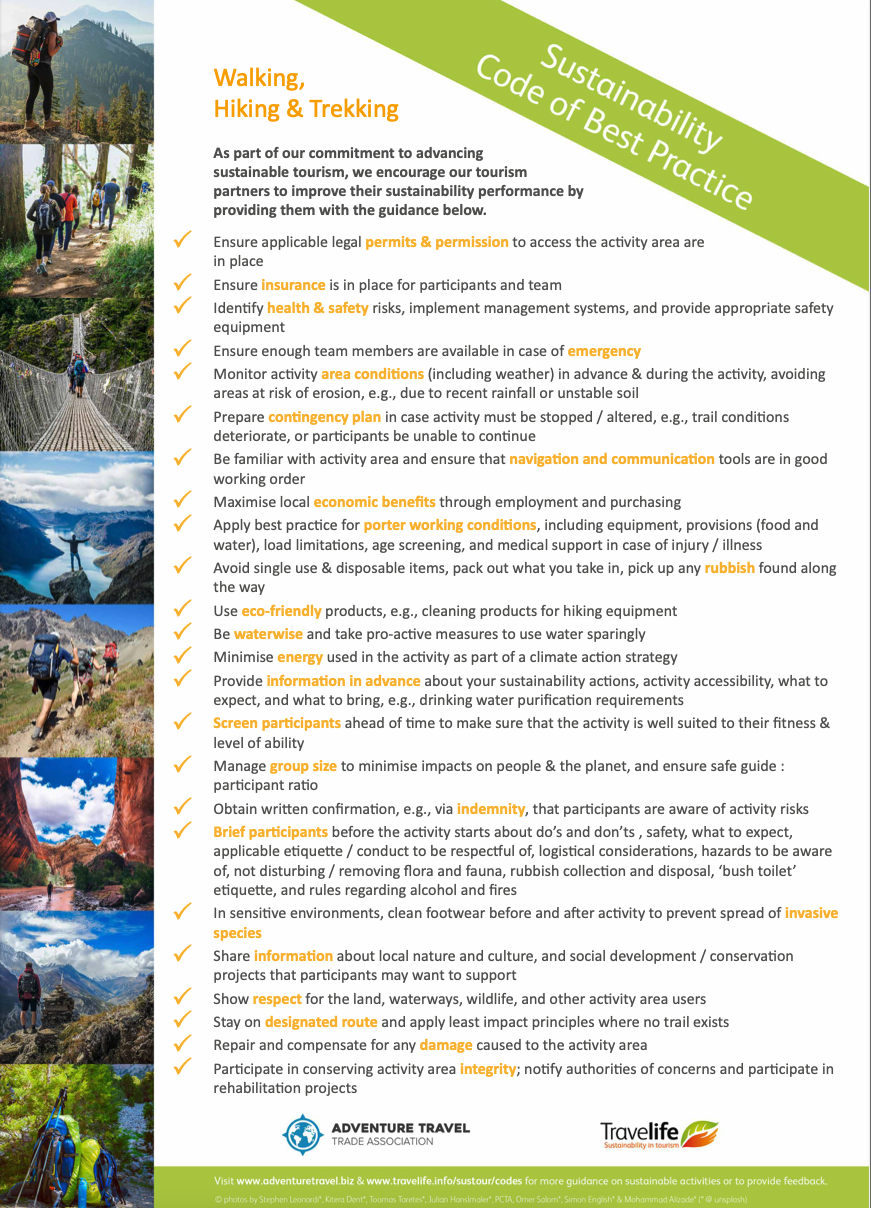
Source: ATTA, 2022
Other practical ideas to improve sustainability in your business that you can put in place cheaply and quickly include:
- Encourage your staff to walk, cycle, use public transport or car-share to work. Make sure you do the same!
- Communicate with and train your staff and guides so you all work towards the same aim.
- Make sure your buildings (offices, accommodation) use energy efficient LED bulbs.
- Encourage all your customers – not just Gen Z – to bring their own reusable water bottles (you will need to provide them with a safe source of water) and ban plastic straws. You can loan or sell reusable bottles too.
- Encourage them to ‘leave no trace’ and take all their rubbish with them. If there is a local beach clean-up project, you could arrange for them to take part.
- If you provide accommodation, put up signs to encourage guests to turn off lights and use water sensibly to save resources.
- Source locally-produced food wherever you can.
- Employ local people, provide suitable training and pay them a fair wage.
- If you conduct your tours by vehicle, invest in an electric vehicle (EV). Prices are coming down as the world strives towards net zero. Take a look at how these businesses have incorporated electric vehicles into their safari tours. Check out your local EV infrastructure.
Tips:
- Find out if your country has its own country-wide sustainable tourism certification scheme that you can join. Examples include Costa Rica’s Certification for Sustainable Tourism (CST) and Responsible Tourism Tanzania (RTTZ).
- Lobby your national tourist board to see if there are any plans to develop a national certification scheme. Getting involved in an initiative like this will help you keep abreast of current issues.
- Tell your national tourist board about your sustainable practices so they can include you in any FAM trips (familiarisation trips) and promote your business as sustainable.
- Consult these CBI studies for more tips and advice: How to be a sustainable tourism business and Tips to Go Green.
Design travel products and services for digital natives
Gen Z are very skilled at using technology at all stages of their journey. You will need to adapt your marketing and tourism products to this trend to effectively sell to this market.
You must have an online presence that is relevant to them. They use many different platforms to gather inspiration, research trips, find the best value products, and book and pay for them. They like to keep all the ‘paperwork’ (confirmation emails, tickets and so on) on their mobile devices. It is important that you can be found on every type of device.
Gen Z likes their customer service needs to be met in real-time and use instant messaging services like WhatsApp and Facebook Messenger. It is a good idea to have both enabled on your website. Consider including a chatbot. If you can make it multi-lingual, which will help attract Gen Z from different European countries.
European Gen Z expect highspeed Wi-Fi and 4 and 5G. When travelling, they do not necessarily expect 5G or even 4G everywhere. However, they do expect to be able to connect to Wi-Fi when in hotels, airports and other built-up areas. Having visually appealing images or videos (‘Instagrammable content’) that can be shared is important to Gen Z. Sharing high-quality images from mobile phones usually requires good mobile connectivity.
Sell your trips online if you can. You can either sell your products directly through your website or Facebook page. If you have a website, but it has not been enabled for ecommerce yet, ask your website developer to help you. You can also explore using QR codes to sell your tours. Find out more in this blog: QR codes for tourism.
If it is not possible to sell your trips through your website yet, you can sign up with an online travel agent (OTA) to sell your products for you. This is a particularly common method for small operators, and it can help you reach markets that you might not be able to reach otherwise. However, OTAs charge a commission for every trip they sell, so you should factor this into your business finances. Find out more in the section below: Which channels can you use to get Gen Z tourism products on the European market.
Tips:
- Find out what levels of connectivity you have in your destination and if developments are planned to improve connectivity. Check out this map where 5G coverage is available around the world.
- Download the CBI studies to help you improve your online presence. The relevant studies are How to be a successful business online and How to work effectively with OTAs.
Attract Gen Z with compelling and immersive content
Gen Z are heavy social media users. They use lots of different platforms to look at and interact with posts and videos and to create their own too. To stand out from your competitors, you will have to create interesting and authentic content to reach them. They look for imaginative storytelling that captures their attention. Gen Z has a short attention span and they need short, appealing stories to interact with.
Develop your storytelling skills around issues they are interested in, like youth culture, food, music and other cultural trends. Use issues like climate change, the environment and supporting local communities to empathise with them and create stories that move them.
Choose images and videos carefully, as they are the tools to attract Gen Z. The images and videos you use should be high quality and impactful. Gen Z is a highly visual group who are motivated by captivating, fun, exciting and moving messages visible on a small screen. Instagram, TikTok and YouTube are the leading social media platforms for Gen Z.
Table 1: Tips for using social media to attract Gen Z
| Platform | Tricks and Tips |

| A visual platform that is best for sharing photos, videos and stories, and interacting with followers.
|
TikTok 
| An entertainment platform for short-form videos that is particularly popular among Gen Z. Allows users to interact with followers and follow top trends.
|
YouTube 
| The world’s most popular video sharing platform. Great for promoting products and services.
|
Source: Acorn Tourism Consulting, 2024
Tips:
- Involve Gen Z in your product development and planning. Do you know any Gen Z in your business, family or social network? Ask them what they think and what attracts them. Think about creating a small ‘focus group’ to capture their opinions and insights. As a thank you, take them on a free trip, ask them to review it then encourage them to post images and reviews online.
- Use a Gen Z influencer to run an influencer campaign. Word of mouth is a major inspiration for Gen Z, and they trust people similar to them over big brands and mainstream advertising. Read the CBI report How to work with influencers to find out more about influencer marketing.
2. Through which channels can you get Gen Z tourism products on the European market?
Gen Z is a large consumer group aged between 12 and 27. Individuals aged between 18 and 27 are newly independent and keen to travel. Online travel agents (OTAs) are the main sales channel for Gen Z. Direct sales and European tour operators are other interesting sales channels to consider. It is a competitive market, and you will need to market your travel products carefully to attract them.
How is the end-market segmented?
Gen Z is a substantial consumer group born between 1997 and 2012, aged between 12 and 27 as of 2024. They are estimated to account for 25% of the global population. They can be divided into 2 broad consumer groups:
- Teenagers at secondary school, age 12–18: this group has very little purchasing power but some influence over their families’ travel decisions. Relevant activities that appeal to the age group may have some impact on where their families travel. This is an important consideration as family travel is estimated to account for around 30% of global travel.
- School leavers, university students and young professionals aged 19–27: this is an influential group of young people who are just setting out on the road to independence and making their own travel decisions. As they settle into the workforce, their disposable income will gradually increase.
For more information about how Gen Z is segmented and their travel motivations, read the accompanying Gen Z market potential report, What are the opportunities in the European Gen Z tourism market.
Which channels do products travel through to reach the end market?
The main market for Gen Z travel products is the 18–27 age group. Gen Z aged 12–17 have limited disposable income for travel and are usually guided by their family. However, Gen Z have some influence over the destination based on the choice of activities. Local operators that have a broad family appeal may capture the younger Gen Z market.
Major sales channels for Gen Z include online travel agents (OTAs), the European tour operator market and direct sales. Gen Z use multiple online channels to research what they want and are not loyal to mainstream channels. Online booking is the preferred method of making sales as it is quick and instant. It has been reported that Gen Z are increasingly using online sources to plan their travel, 31% more than before the pandemic.
The process is outlined in the chart below.
Figure 2: Sales Channels for Gen Z Travel products
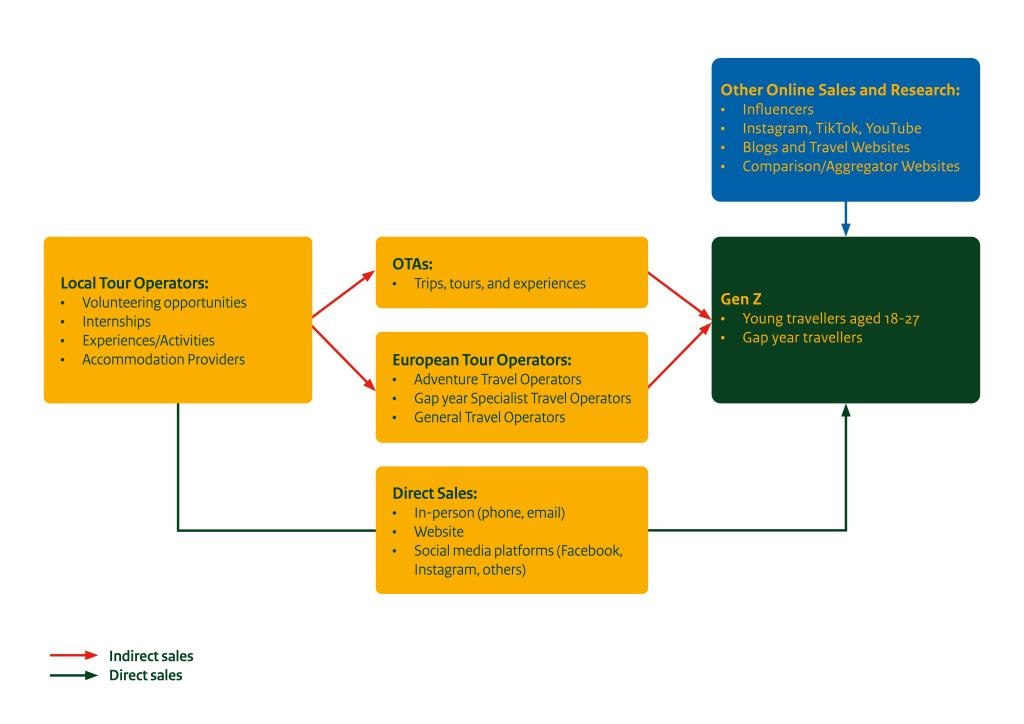
Source: Acorn Tourism Consulting, 2024
- Local Tour Operators (Direct Sales): If you have your own website and use your social media platforms to drive traffic to your website, you can attract Gen Z to book with you directly.
- OTAs: Gen Z uses OTAs widely to research and book experiences and activities. They like OTAs for their dynamic packages and loyalty programmes, like Booking.com’s Genius programme, which gives more discounts as more bookings are made. Other OTAs they use include GetYourGuide, Tripadvisor and Viator. They also use OTAs like Airbnb to book accommodation.
- European Tour Operators: Many European tour operators target a portion of their itineraries to the youth market – Gen Z and gap year travellers. They are often adventure tour operators. They market them in a variety of ways including ‘gap year’, ‘teenagers’, ‘18-30’ and ‘young people’. Examples include Sans-frontieres (France), aimed at teenagers and young adults, Travel Junkies (Germany) and Bunk House (the Netherlands), which specialises in trips for young people in their 20s and 30s. The UK is a major provider of gap year travel. Leading British companies include Gap360 and Plan My Gap Year.
Online Research and Sales: Before booking, Gen Z uses a wide range of online sources for research. Social media channels like Instagram, TikTok and YouTube are popular for inspiration. Many small, local operators have optimised their channels for selling their tours on their platform page. Gen Z largely follow influencers, seek out websites and travel blogs and use aggregator websites like Skyscanner, Kayak and Hopper to compare prices for services like flights, rental cars and accommodation.
It is a competitive market, and you will need your trips to stand out. Follow these tips for marketing your trips to Gen Z:
- Create a bold personality for your brand; one that sets you apart from the competition;
- Create entertaining and engaging content that matches Gen Z interests. Consider creating exciting videos to showcase your trips;
- Make sure you promote diversity and inclusivity in all your marketing materials. You must also be transparent and ethical;
- Promote your sustainability credentials honestly and openly. Do not greenwash under any circumstances. It will harm your reputation.
What is the most interesting channel for you?
OTAs are the best way to reach Gen Z. Their use of OTAs is increasing as these platforms are evolving to provide exactly what they demand: flexibility, competitive pricing and instantly confirmed bookings. They can book in advance, or spontaneously. To work with OTAs, you need to be very organised and should build your knowledge of working in this dynamic market.
Direct bookings are also important to reach Gen Z. If you can sell through your website, you should do this too. Direct sales are more profitable than sales made through an OTA.
Figure 3: Gen Z enjoy a variety of activities while travelling
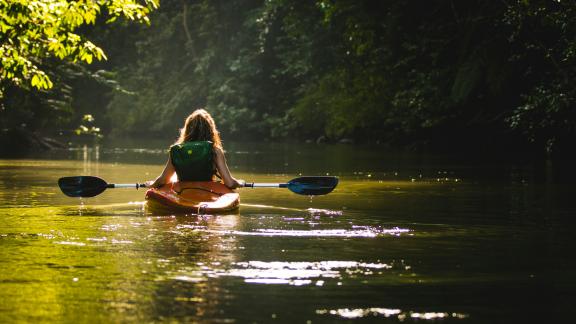
Source: Filip Mroz at Unsplash, 2016
European tour operators are interesting channels for reaching Gen Z and the gap year market if they are looking for a package. To assess whether your tour will be suitable, look closely at what they offer their young travellers to see if would fit well with their itineraries. You will need to have robust safety standards in place to do business with these operators.
Tips:
- Consult the CBI study How to work effectively with OTAs to help you decide which OTAs to work with and how to prepare your tour or tours for the relevant platform.
- Build yourself a website to showcase your tours. Carefully design your website to appeal to Gen Z. They want adventure, immersive and meaningful experiences and to learn new things. Videos and inspirational images appeal to them. Use the CBI study How to be a successful business online to help you create a new business or improve your existing website.
- Read the 2 business studies Tips for Finding Buyers on the European market and Tips for Doing Business with the European market to help you make an approach to European tour operators. They will want to know all the steps you take to keep the younger market safe as well.
3. What competition do you face on the European Gen Z tourism market?
Gen Z like to go to a wide range of destinations. Developing destinations have always been popular among young travellers as they are usually good value places to visit. Southeast Asia has been a popular option for young European travellers for many decades, including those on a gap year. Latin American countries have been growing in popularity recently and the region reopened to tourism more quickly following the pandemic.
Which countries are you competing with?
Colombia, Peru, Thailand and Vietnam are some of the top destinations for Gen Z travellers. Other competing nations include Costa Rica, Cambodia, Bali in Indonesia, the Philippines, Mexico, Morocco, South Africa, Tanzania, India and Sri Lanka.
Colombia
Colombia is an appealing destination for Gen Z who enjoy adventure, diverse landscapes and a vibrant culture and history. Colombia has incredible natural diversity from the Amazon rainforest to the snow-capped peaks of the Andes Mountains. Gen Z are drawn to Colombia’s vibrant music scene of festivals, dance and street art, and Colombians are known for their hospitality and friendliness. Colombia is also relatively affordable with a range of budget accommodation options and plenty of street food.
Colombia has rapidly grown in popularity among Gen Z over the past few years. It has ‘off the beaten track’ appeal amongst young people looking to travel to places that are less touristy. Since Colombia became a peaceful nation again, communities have opened up to community-based tourism (CBT). Gen Z values the opportunity to connect with local communities in this way, experiencing Colombian culture first hand, away from the masses.
Colombia is committed to sustainable tourism. It is a signatory of the Future of Tourism Coalition, which is a global group dedicated to ensuring that tourism remains a force for good. There are 27 tourist destinations certified as sustainable by the Ministry of Tourism (MINTUR), including Cartagena and its walled city. A new Sustainable Tourism Policy means that tourism providers and destinations must be officially registered to operate and must meet sustainability standards.
Figure 4: Gen Z like to immerse themselves in local culture
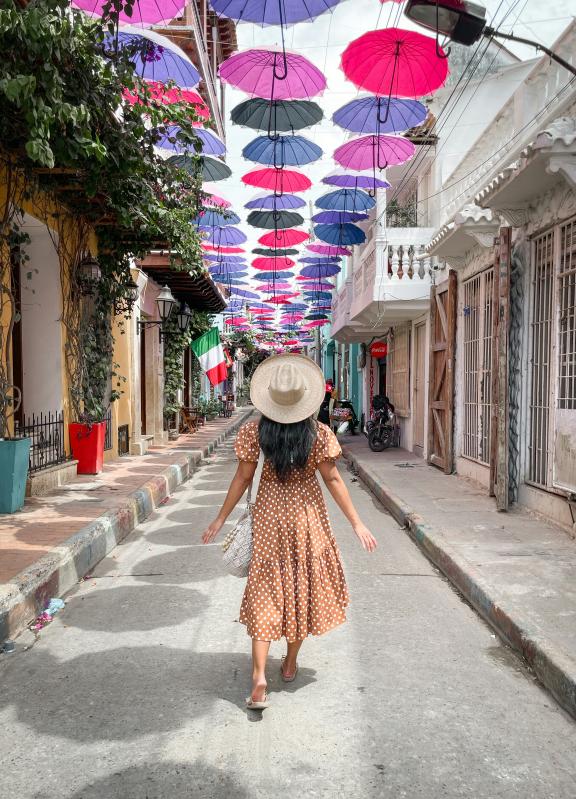
Source: Alexandra Tran on Unsplash, 2022
Peru
Peru is a leading destination for Gen Z, and it is also popular for gap year tourism and backpacking. Its most famous attraction, Machu Picchu and the Inca trail, are top places to visit. Spectacular natural attractions extend from the high Andes mountains through rainforest to coastal deserts. Peru is also well known for its cuisine, believed to be among the best in the world.
‘Instagrammable’ locations such as Rainbow Mountain, Machu Picchu and the colourful town of Huaraz are popular amongst Gen Z. Travel influencers are also drawn to Peru, which makes the country top of the mind for the young consumer group.
Peru’s reputation as a sustainable destination is also growing, and many local operators offer sustainable tours and run their businesses under sustainable principles. Peru is also very keen to promote its sustainable credentials. There are lots of opportunities to stay with local families, visit markets and take part in ethical volunteering which match Gen Z’s desire for responsible travel.
Thailand
Thailand is a very popular destination for young travellers, including Gen Z. It appeals to Gen Z’s adventurous spirit, budget-conscious needs and desire for ‘Instagrammability’. Thailand offers an excellent travel experience at a much lower cost compared to European destinations. Budget friendly guest houses and street food are particularly popular among Gen Z, and there are plenty of luxury options for people who are not on a strict budget.
Gen Z can take part in adventure activities like island hopping, trekking through lush jungles, caving in hidden caves, diving on coral reefs and ziplining. Thailand has some of southeast Asia’s most beautiful beaches with white sand and crystal-clear waters. Thai food is renowned around the world for its vibrant flavours and fresh ingredients. Its rich culture and heritage are evident in the huge number of temples, ancient ruins, festivals and markets.
Vietnam
Vietnam is a great value destination and popular among Gen Z. It is well known as an adventure destination and is regarded as ‘off the beaten track’. Vietnam has great Instagram appeal for young travellers for its diverse landscapes, stunning beaches and rice paddies, mountains and hill stations in Sapa and vibrant cities of Hanoi and Ho Chi Minh City. The emerging nightlife scenes in the 2 cities caters to Gen Z’s desire for social experiences.
Like many emerging tourism destinations, sustainability is embedded into travel products at all stages, and Vietnam is no different. Homestays, village tours and opportunities to support local communities are common throughout Vietnam. Vietnam offers Gen Z an authentic glimpse into local life, enabling them to connect with Vietnamese culture and create meaningful memories.
Key Takeways:
- Gen Z look for adventure and meaningful, authentic experiences. You should make sure your tours reflect adventure and that Gen Z will be inspired by what you have to offer.
- Sustainability in tourism is becoming more and more important. Gen Z will demand more sustainable tourism practices as they are growing up in a time where sustainability is at the forefront of their lives. You should know how sustainable your destination is from a regional perspective and understand what steps are being taken towards net zero and climate change actions.
Which companies are you competing with?
There are many local tour operators that compete for business in developing destinations. See how they set themselves apart to create a competitive edge.
Companies from Colombia
Nexperience is a newly established local tour operator that offers cultural, historical and social walking tours in Bogota, Medellin and Cartegena. It was established in October 2020 to help revitalise tourism in Colombia after the pandemic. Tours are varied and include sightseeing tours, street food tours, a coffee crawl in Bogota, tours through the mangroves of Cartegena and a tour of rooftop bars.
Tours can be booked through their website, but they can also be found on OTA websites Viator, Guru Walk and GetYourGuide. This is great for Gen Z. The website is bold and simple with social media links and contact details are easy to find. The website has online booking features, which is ideal for Gen Z, and there is easy access to reviews and testimonials.
Zippy Tour is a small local tour operator that offers tours of Comuna 13 and Guatapé in Medellin. Comuna 13 was once the most dangerous area of the city. It is now testament to the success of the city’s transformation to peace. Particularly appealing to Gen Z, the tour of Comuna 13 includes storytelling, artistic elements, such as graffiti, dance and art, and passionate local guides. The tour is free, although tips are encouraged.
Companies from Peru
Lima Experience is a local tour operator with a wide range of 5-star traveller reviews and certificates of excellence from Tripadvisor. It offers trips from Lima and Cusco to a range of destinations including the Ica region, known for the oasis of Huacachina in the sand dunes, as well as the Nazca Lines and various archaeological sites. Trips can also be customised.
The operator’s website promotes its positive reviews and uses online design features like dynamic underlining to highlight its successes, like ‘Best of the Best 2023 by Tripadvisor’. It has accounts on a variety of social media platforms including TikTok, which means it also markets its tours to Gen Z. The website is available in English, Spanish, Dutch, French, German, Italian and Chinese.
Rainbow Mountain Travels is another highly rated local tour operator that specialises in tours to Rainbow Mountain. It is also recognised by the official tourism organisation. They boast more than 50,000 happy travellers and more than 5 years’ experience. Its website is very easy to navigate and has lots of relevant information about the tours. There are also lots of inspirational images of past customers and a direct link to its Instagram page. This is very appealing to Gen Z.
Figure 5: Past customers of Rainbow Mountain Travels
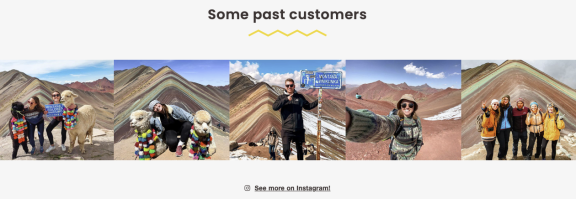
Source: Rainbow Mountain Travels, 2024
The operator states that it uses modern equipment and transport, top-quality guides and has excellent safety standards. It also provides helpful advice to customers of what issues they should be aware of when choosing a tour operator. Read their advice below and check that you do not do any of the things that will deter customers.
Figure 6: Advice to customers when looking for local tourism operators

Source: Rainbow Mountain Travels, 2024
Companies from Thailand
Phuket Elephant Sanctuary offers tours of its ethical elephant sanctuary on its website and on Viator. Its story is very compelling. The website clearly states its ethical and responsible practices, and details how the rescued elephants roam, bathe, forage and socialise freely in their indigenous habitat. The sanctuary was created to provide homes for elephants who spent their whole lives in the logging and tourism industries and have experienced tough lives. Ethical and responsible tourism that can be proven is important for Gen Z who take sustainability very seriously.
The website provides lots of information for visitors, such as how to behave and what to bring. It also features information about the individual elephants who live there and their lives, which is very emotional. It also features a video of the canopy walkway over the forest; Gen Z are avid users of YouTube.
BangkokGuideSmile is the website of a private tour guide in Bangkok. Mandy, the guide, creates tours for her customers and has around 12 travel plans. She features testimonials and reviews very prominently alongside lots of inspirational images. She also sells her tours through Tripadvisor and the website is linked to several social media platforms. It is a good example of how a small operator can make good use of linking their website with an OTA and social media platforms, which is important for Gen Z.
Companies from Vietnam
Aloha Vietnam offers tours to Halong Bay and Ninh Binh, often referred to as ‘Halong Bay on land’ and a UNESCO World Heritage Site. It also includes many short experiences like cooking classes, street food tours, cycle and walking tours. There is also a selection of overnight tours, such as homestay tours in the northern Sapa region. The website has lots of information, such as travel guides, and all the travel plans are detailed. A gallery of photos provides more inspiration, and a video on the homepage appeals to younger generations too.
There are many ‘calls to action’ including an adaptive WhatsApp button, which moves about for customers to click on. This is a very user friendly way to encourage potential guests to get in touch for free. The website is available in Vietnamese and English. If you want to attract the European market, you should make sure your website can be viewed in English at the least. Having information in Spanish, French and German would be good too. Talk to your website developer to help you add multiple languages to your website.
Mama Chao Homestay is a good example of a small, local homestay operator who promotes her homestay on Facebook. She has also teamed up with an influencer who featured her homestay on her blog. Mama Chao manages her Facebook page effectively. There are lots of positive reviews, photos and images. Gen Z do so much research online that it is often small operators like this who attract this group of young, tech-savvy travellers.
Key Takeaways:
- Give your tours a catchy name to attract Gen Z. Use inspirational phrases to describe your tour like ‘Best seller! Fantastic trekking tour in spectacular rainforest’.
- Be sure to feature customer reviews prominently on your website. Gen Z rate customer reviews very highly and will be more likely to book with you if they can see authentic, genuine reviews of your trip.
- Include your social media platforms on your website. Make sure they link through correctly. To reach Gen Z, you need to have a website and social media platforms that connect together. If you do not have a TikTok account yet, consider setting one up. However, do your research first so you know how to use it to the greatest benefit.
- Include a video on your website if you can. Gen Z are keen viewers of video and often prefer them to images.
- Consider offering free tours to raise awareness of your business. Gen Z often have limited budgets and will be attracted by free tours. You may be able to upsell paid tours to existing customers.
What products are you competing with?
The main products you are competing with are adventure tourism products. Gen Z is similar to adventure travellers. They like to try all sorts of new things while on a holiday trip and are highly likely to do physical activities in outdoor environments and to take part in cultural activities. You will have to market your trips boldly to stand out in this competitive market.
Tip:
- Make sure you include lots of different activities in your trip to appeal to this group. Think about what goes well together, like dune buggying and trekking combined with a visit to a local community festival followed by a sunset photo opportunity.
4. What are the prices of Gen Z tourism products in the European market?
Gen Z looks for good value products. Their budgets are not as big as their Gen Y counterparts, and they are keen to get value for money. You must price your travel products carefully to attract them. Those who travel independently are likely to have even smaller budgets than those who travel on a package holiday.
The market for Gen Z travel products is very large and prices are varied. The table below shows how different they can be based on destination, activities, duration and so on.
Table 2: Examples of Gen Z Travel Products on the European market, 2024
| Tour | Country | Duration | Price pp in EUR |
| Siem Reap Morning Cuisine and Culture Tour | Cambodia | 3 hours | 23 |
| Cooking Class in Hanoi | Vietnam | 4 hours | 28 |
| Lima Market Food Tour | Peru | 3 hours | 30 |
| Bangkok Canal Tour by Long-Tail Boat | Thailand | 2 hours | 30 |
| Street Food Tour, Cartegena | Colombia | 2.5 hours | 33 |
| Phnom Penh's Ultimate Street Food Tour | Cambodia | 4 hours | 33 |
| Chiang Dao Cave and 5 Hill Tribe Villages | Thailand | 8 hours | 41 |
| Rainbow Mountain Tour | Peru | 12 hours | 46 |
| Cookery Class in Fes | Morocco | 1 day | 50 |
| Private Pisco Vineyard Tour + Local Gastronomy | Peru | 3 hours | 51 |
| Hanoi by Motorbike and Street Food Walking Tour | Vietnam | 7.5 hours | 61 |
| Day trip to Angkor Wat with sunset | Cambodia | 1 day | 68 |
| Gabriel García Márquez Myths and Legends Walking Tour | Colombia | 2.5 hours | 69 |
| Boat Trip on River Kwai and Erawan Falls | Thailand | 12 hours | 69 |
| Hoa Lu, Mua Cave and Tam Coc with Cycling, Swimming and Sunset Party | Vietnam | 12 hours | 74 |
| A Morning with Elephants | Thailand | 3.5 hours | 78 |
| Sapa Tour with Homestay | Vietnam | 2 days | 88 |
| Two Beautiful Stories, One Amazing Day – Graffiti Tour and Former Landfill, Medellin | Colombia | 8 hours | 101 |
| Paracas and Huacachina | Peru | 17 hours | 101 |
| Guatape and Coffee Farm Tour | Colombia | 9 hours | 107 |
| Blue Town of Chefchaouen from Fes | Morocco | 1 day | 135 |
| Agafay Desert Day Trip from Marrakech | Morocco | 1 day | 145 |
| Full day Battambang Province | Cambodia | 1 day | 216 |
| A Little Majesty on a Zagora Desert and Dunes Tour | Morocco | 2 days | 275 |
Source: Acorn Tourism Consulting, 2024
Acorn Tourism Consulting Limited carried out this study on behalf of CBI.
Please review our market information disclaimer.
Search
Enter search terms to find market research

